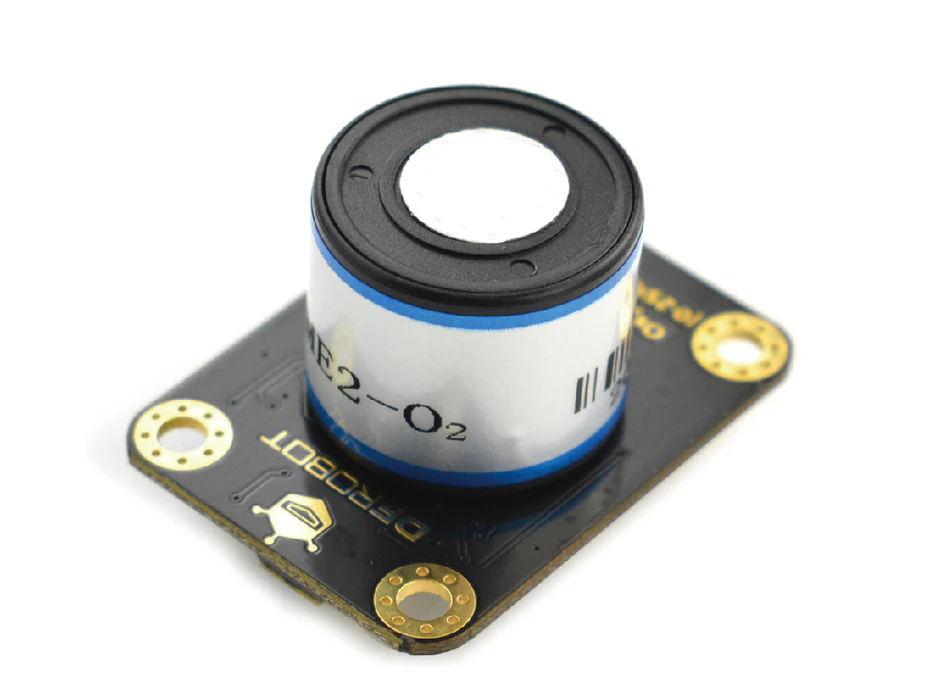
Overview
The Gravity: I2C Oxygen Sensor is based on electrochemical principles and it can measure the ambient O2 concentration accurately and conveniently. With high anti-interference ability, high stablility and high sensitivity, this arduino-compatible oxygen sensor can be widely applied to fields like portable device, air quality monitoring device, and industries, mines, warehouses and other spaces where air is not easy to circulate.
This compact dfrobot oxygen sensor supports I2C output, it can be calibrated in the air, can accurately measure the oxygen concentration in the environmentit. It is compatible with many mainboards like Arduino Uno, esp32, Raspberry Pi and so on. Its effective range is 0~25%Vol, and resolution can reach to 0.15%Vol. It supports wide range input voltage: 3.3V to 5.5V.
Moreover, the lifetime is as long as 2 years. With simple Gravity interface and practical sample code, you can build your own oxygen concentration monitor easily and conveniently.
Get Inspired

This project shows how to create a security system using the camera of an Arduino Nicla Vision board. The system automatically triggers a camera snapshot when presence is detected. Presence is detected when the system detects a sound level that exceeds a configurable threshold. The whole system is controlled by an Arduino Cloud dashboard.

Shortly after attending a recent tinyML workshop in Sao Paolo, Brazil, Joao Vitor Freitas da Costa was looking for a way to incorporate some of the technologies and techniques he learned into a useful project. Given that he lives in an area which experiences elevated levels of pickpocketing and automotive theft, he turned his attention to a smart car security system. His solution to a potential break-in or theft of keys revolves around the incorporation of an Arduino Nicla Vision board running a facial recognition model that only allows the vehicle to start if the owner is sitting in the driver’s seat. The beginning of the image detection/processing loop involves grabbing the next image from the board’s camera and sending it to a classification model where it receives one of three labels: none, unknown, or Joao, the driver. Once the driver has been detected for 10 consecutive seconds, the Nicla Vision activates a relay in order to complete the car’s 12V battery circuit, at which point the vehicle can be started normally with the ignition. Through this project, da Costa was able to explore a practical application of vision models at-the-edge to make his friend’s car safer to use. To see how it works in more detail, you can check out the video below and delve into the tinyML workshop he attended here.








